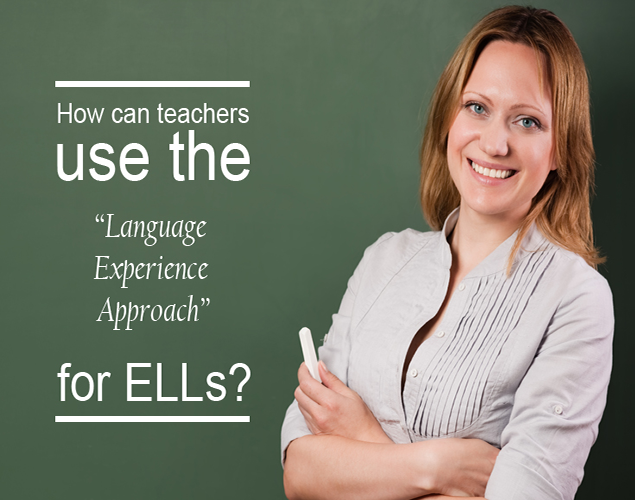How can teachers use the “Language Experience Approach” for ELLs?
Posted by Network Support · Leave a Comment
The United States is rapidly becoming more diverse in terms of culture and language. It is possible to walk down the halls of a school and hear several different languages being spoken by its students. With these learners and their languages come diverse cultural perspectives and background experiences. Teachers therefore face challenges both exciting and unfamiliar. In this article, we present an excellent strategy for teachers seeking to develop the literacy prowess of their students.
The Language Experience Approach is a literacy development method that has long been used for early reading development with first language learners. It is perfect for diverse classrooms. It combines all four language skills: listening, speaking, reading, and writing. And as previously noted, working on the four language skills side by side aids fluency.
A Language Experience Approach lesson is centered around a learner-generated text. The rationale behind this approach is that materials with familiar vocabulary and ideas are more meaningful and accessible than texts found in pre-prepared books. For teachers wanting to work on reading fluency with emergent readers, learner-generated texts are ideal. The following sections describe the steps of a Language Experience Approach lesson.
STEP #1: A Shared Experience: Ideally the Language Experience Approach process begins with something the class does together, such as a field trip, an experiment, or other hands-on activity. If this is not possible, a sequence of pictures that tell a story can be used, as can a student describing a sequence of events from real life.
STEP #2: Creating the Text: After the shared experience takes place, the teacher and students, as a group, verbally recreate it. Students take turns volunteering information, as in a large-group discussion. The teacher acts as a funnel for the students’ words as she transcribes them onto the board in an organized way. She prompts the group by asking questions such as “What happened next?” She also helps with recall of events if the class gets stuck.
The teacher can make small grammatical changes for correctness as she writes, when appropriate. For example, if a student says “We goed to the zoo,” the teacher writes “We went to the zoo.” Writing in this manner avoids confusing students about correct grammar. (Language learners in particular who see the teacher writing something ungrammatical may think it’s actually correct!) The teacher can also include any corrections made by other students. Another option is for the teacher to write all mistakes as they are spoken and have students correct them as a group before moving on to the next step. A teacher who opts for this method should be clear up front that she may initially be writing some language that is not grammatical. The main point during this transcription process is to create a text consisting of vocabulary and ideas that come, as much as possible, from the students.
STEP #3: Read & Revise: The class reads the story aloud together and discusses it. The teacher asks if the students want to make any corrections or additions to the story. Then she marks the changes they suggest and makes further suggestions as needed.
STEP #4: Read and Reread: The final story can be read in a choral or echo style, or both. Students can also read in small groups or pairs, and then individually.
STEP #5: Extension: This text can be used for a variety of literacy activities including some that can be done right away:
- Give the story a title and make illustrations for it.
- Copy the story to take home and read with family.
- Create comprehension questions to ask a partner.
- Do phonics work: Find all of the words that start with the letter ___.
- Practice sight-word recognition: How many times can you find the word ______?
Some activities that can be done the next day (after teacher preparation) are:
- Cut a copy of the story apart into sentence strips and put them back in order.
- Cut one or more of the sentence strips apart and put the words back in order.
Multiple Language Experience Approach texts can be assembled into a book for students to take home and read. One classroom’s “textbook” could even be used by another class, in a kind of Language Experience Approach exchange program.
Like this article for teachers?
Browse the Professional Learning Board COURSE CATALOG to find related online courses for teachers in your state. Professional Learning Board is a leading provider of online professional development classes that teachers use to renew a teaching license or renew a teaching certificate.





